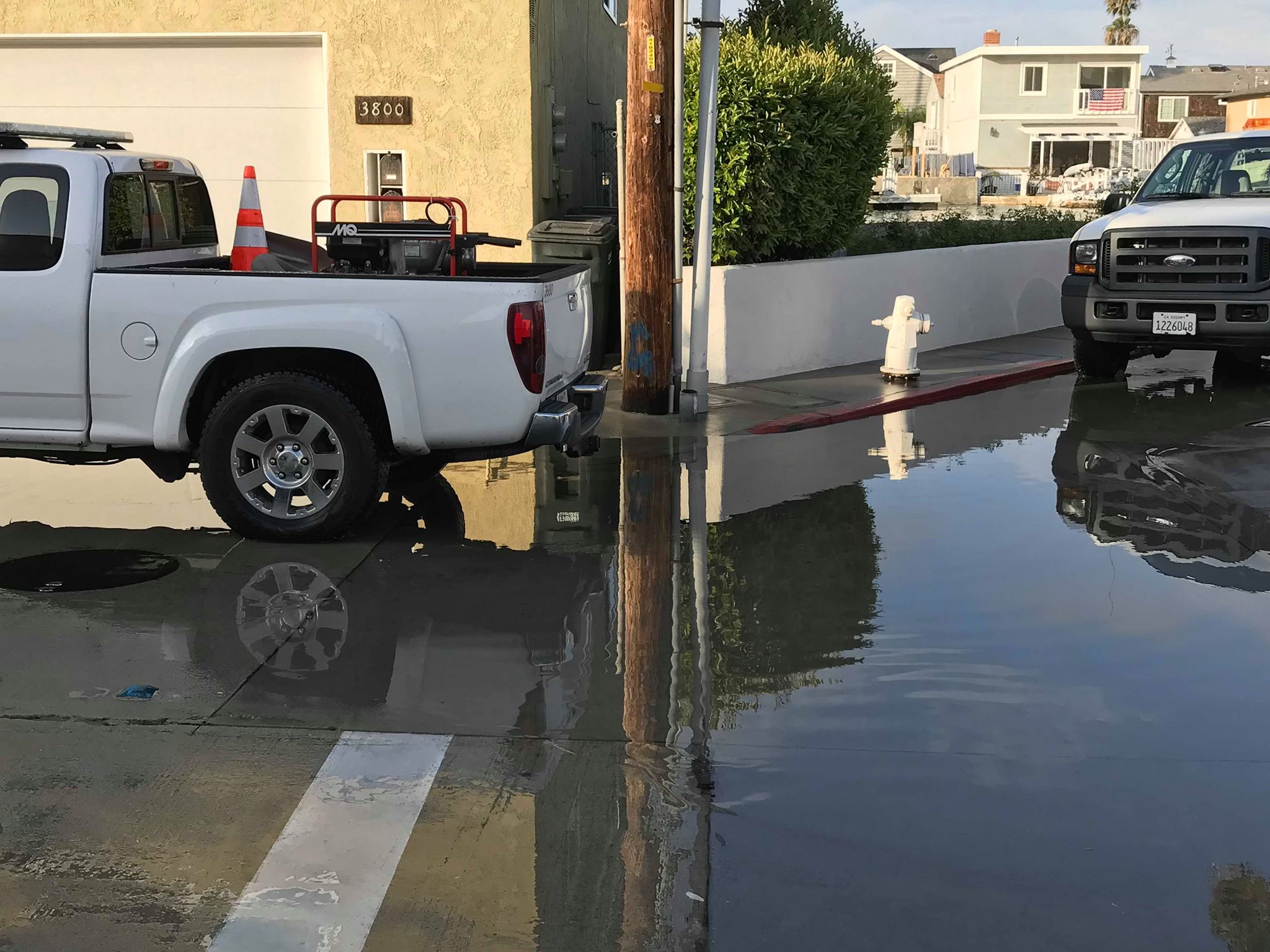‘King Tides’ cause flooding in Newport Beach, advisory issued
Suddenly, the ocean was on the street.
This week’s “King Tides” caused water to breach a seawall on Balboa Peninsula, flooding the streets late Wednesday. Swell with sizable surf and onshore winds in the region likely helped contribute to the flooding.
The National Weather Service issued a flood advisory through 11 p.m. Saturday, warning of minor coastal flooding that could happen during the high tide in low-lying areas like Sunset and Seal Beach, Newport and Oceanside.
The highest tide – about 7 feet – will happen in the evening hours between 8 and 10 p.m. through Saturday.
Quick response
Devin Seaver captured images and video as the water flooded Newport near 38th Street Wednesday at about 6 p.m., hours before the highest tide level hit.
City workers quickly responded, and the water was pumped out within 30 minutes, he said.
“Today is going to be worse, I can guarantee it,” he said, noting an even higher tide Thursday evening than the previous night.
He said city workers left their pumps in the area. Damage was only moderate, he said.
“It doesn’t seem to happen enough to be a big concern. But if our sea levels continue to rise … these areas of Newport Beach will be underwater,” he said. “There won’t be a Newport Beach, if that’s the case.
“I think right now, it’s not that big of deal. It just surprises people when you have a bunch of water and it’s going into your house.”
Local resident Mike Glenn, who first reported the flooding, said the city has been around since 1906, and city workers know where the low points are on the peninsula.
“Sand bags or similar should have been prepared to prevent this situation from unfolding the way it did,” he said. “I just hope nobody had permanent property damage.”
King tides
Marina Psaros, co-founder of the California King Tides Project, said king tides are described as the highest tides of the year, which happen in both winter and summer. Usually in the drier months, there’s not as much flooding because there’s not other wet-weather factors like rain and big swells as frequently as in winter.
She said the kind of flooding experienced in Newport Beach is often called “nuisance flooding” by the National Oceanic and Atmospheric Administration.
“As the sea rises slowly, we expect to see this nuisance flooding. We have seen it more and more,” she said.
According to NOAA, as sea level increases, it no longer takes a strong storm or a hurricane to cause coastal flooding. Flooding now occurs with high tides in many locations due to climate-related sea level rise, land subsidence, and the loss of natural barriers.
High tide flooding has increased in the U.S. on average by about 50 percent since 20 years ago and 100 percent since 30 years ago, reads the NOAA article.
Psaros’ project hopes to document those changes, asking people to submit images of flooding or noticeable changes during high tide cycles.
“It’s projected to be more and more of an issue. That’s what these king tides are showing us,” she said.
Monitoring infrastructure
With the highest tide of the summer happening this week, low-lying areas with houses on the beach or roadways that can flood should be monitored closely, Psaros said.
“I don’t think we’ll experience too much damage right now, but there’s things we’re concerned about,” she said. “There’s a lot of really great scientific research happening right now looking at the different tolerances of different infrastructure at risk.
“California is a leader when it comes to potential impacts on sea-level rise.”
She noted some areas that have made infrastructure changes to adapt to the rising sea levels, like a marina in Germany she once lived where city planners rebuilt areas so pedestrian walkways were well above the high tide and flood mark, or areas in Northern California where homes are being built on stilts.
“We can’t stop the water, so how do we live with it,” she said. “It’s an interesting future we have.”











